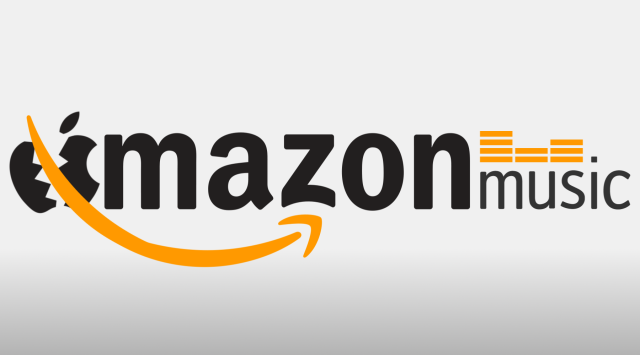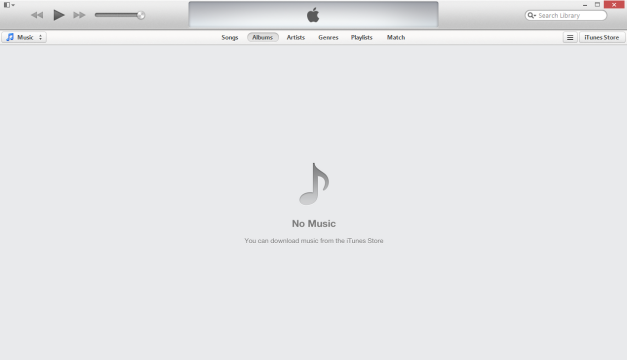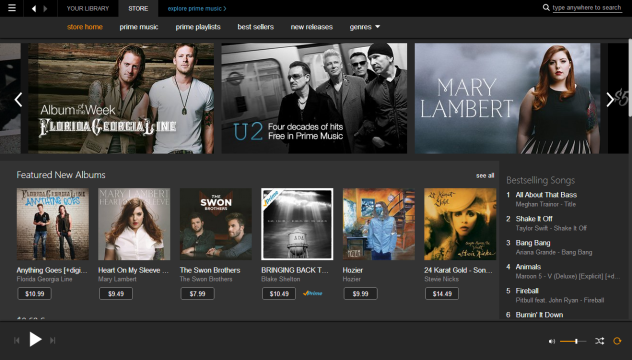
If you’ve frequented this website for any length of time, you’ve probably picked up on the fact that I am no great fan of Apple. However, despite my frustrations with their devices, I’ve long been a fan of iTunes as a digital distribution platform. Sure, there are far better music and video players out there, but when it came to downloading content for those alternative applications to munch on, iTunes was my go-to source for years. Unfortunately, after so long of Apple holding this one last mark on my good side, they have finally struck the death blow to our relationship, and as it turns out, they’ve done me a great favor. I will probably never put my own money into iTunes ever again (I’m still open to gift cards—you know, just FYI), but contrary to my prior expectations, I also don’t think I will ever miss it at all.
Why?

My iTunes Experience
Well, it all began a few months back when I booted up iTunes one day to find that, lo and behold, my account was practically empty. Three random albums were unharmed, but the rest was just gone. If I visited the store pages for any of these albums or movies I purchased, iTunes would have gladly let me pay for them a second time, but not offer a redownload option. Well, I had all of this content physically stored on my hard drive, so initially I was in ‘no harm, no foul’ mode. As a tech journalist I’ve done plenty of communicating with tech companies via email, and it just so happens that I’m not half bad at writing and can usually earn their cooperation if it is not offered to me outright. And so I dove headfirst into the bobbing-for-Apples game that Apple tech ‘support’ turned out to be. And just like the real thing, I fished around unable to snag a prize to save my life.

As expected, the initial response to my problem detailing the missing purchases was prompt and polite. It practically ignored all the information I gave in my initial support ticket, but hey, I was willing to give this Apple rep the benefit of the doubt. Until you’ve had a chance to gauge someone’s level of tech-savvy you basically have to presume they know nothing, and besides, it’s practically standard support etiquette to first refer users to existing information on a dedicated support website. Even though I already tried the solutions recommended to me without success, I gave them a second go just so I could say that I tried again and replied back with my results—or lack thereof.
That’s when things started to go downhill, though it did look promising at first. The Apple rep asked for some basic information about my account, which I happily gave assuming he could use it to look up my purchase history and restore the lost items to me—simple and straightforward. Unfortunately, in typical Apple fashion, that’s not quite how things work. After some more back-and-forth, I ended up having to retrieve my entire purchase history manually—item by item, without copy and paste (iTunes doesn’t allow this on purchase history). What Apple should have been able to do in an instant took me easily an hour, and I’m a pretty fast typist. I mentioned this inconvenience to the Apple rep, but by this point I already had a good guess that nothing I said would get through to anyone capable of doing much about it. At least I had the purchase history done and the problem would be solved shortly, right?
Wrong.
The next day I got a response back from Apple saying that some purchases had been “changed or removed from the iTunes store” and could not be re-added to my account. Well, what Apple meant by ‘some’ is ‘everything on your account’. Now this was a flat out lie, and I took the time to demonstrate as much, linking the Apple rep to the iTunes pages for several of my missing items—some of which were brand new and definitely not going to be altered or removed for some while—but unsurprisingly, after that I was effectively stonewalled. At first I just got the same political answer over again, and then the emails just stopped completely. Apple’s ultimate response, in essence: “The sum total of your account is a drop in the bucket to us, so good luck to your backups and sod off.” Actually, they probably wouldn’t use that term (unless Jony Ive had something to do with it), but this is a family-friendly site.
So there you have it: Apple sold me products, then removed them from me. Some might say “well, you agreed to the TOS, your mistake,” but this is patently untrue. While Apple pulled the TOS argument themselves, my missing items did not fall under those conditions, which I took the time to prove. The Apple rep didn’t even deny it, he just didn’t acknowledge my proof at all. So I filed a complaint. No response to this day. Nothing.
Needless to say, I am thoroughly convinced of iTunes’ and Apple’s unreliability and have no interest in investing in them further. While I do still have my backups, after activating them on five devices I will not even have access to those anymore. The impermanence of digital media just got even less permanent.
Thankfully the story doesn’t end there, or this would be one downer of a post. No digital media distribution platform? How shall I survive!?
Easy: use a different one. The trickier question is…which one? Try as they might, no other company has managed to dethrone the mighty iTunes. But this doesn’t mean the alternatives aren’t worth paying attention to, or even that they are inferior services. In fact there are multiple solid choices out there, but I have undoubtedly settled on mine. From here on out, I will be an Amazon Music customer.
My Amazon Music Experience
Initially Amazon Music was something of an afterthought for me. Like many Amazon services, Music is kind of just there. You never hear much about it, there’s nothing especially catchy in the name, and the desktop application is practically a secret. But as it turns out, in every way that matters Amazon Music is a far superior and friendlier service than iTunes ever was.

For one, consider Amazon’s track record. There are Amazon accounts out there that date all the way back to 1998, and all that account data is still available to users. In fact, not long after Amazon Music first launched, Amazon grandfathered in its customers with AutoRip by offering free digital copies of physical media purchased through the site all the way back to the early days. The offer still stands, too—buy physical CDs or even vinyl records participating in Amazon’s AutoRip service, and the MP3 versions are instantly added to your account at no charge. If there’s a company I trust to support my purchases for the long haul, it’s Amazon.
Then there’s Amazon Prime. The amount of free digital music for Prime subscribers is just ridiculous. These are free as in click a button and it’s in your library forever. And the offer doesn’t just apply to mainstream hits, either. I have pretty obscure music tastes, myself, and I was shocked to see some of the albums Amazon offers for free, digitally. Oh, and did I mention these are all automatically in the cloud? Yep, you can listen to your library in its entirety without downloading a thing. This isn’t space you can run out of or have to upload music to manually. It’s just there. You can even earn money to add to your library just by downloading Android apps from the Amazon Marketplace, even free ones. No joke! Participating apps seem to be kind of random, but when you hit one, Amazon will automatically credit $1 to your MP3 account. That boils down to one free song just for downloading an an app. This credit does expire, but sheesh, it’s pretty easy to find ways to use it on time. Not that you’ll necessarily even need it, though—on my last purchase with Amazon Music, I noticed an extra line-item in the receipt: “Promotion: -$1.” Promotion? Promotion for what? Nothing, it was just “here, have a buck.” That’s a whole different attitude than Apple refusing to give back what I paid full price for.
And all that is to say nothing of the Amazon Music desktop app, which I didn’t even know existed until just recently. Turns out it’s actually quite an elegant application, easily as convenient as iTunes and a heck of a lot better looking, too (there are also Android and iOS versions that are equally as nice). Like the Kindle app, the Music app is divided into tabs for your cloud storage and local library, and downloading purchases is fast and simple as you’d expect. On the local side Amazon Music also attempts to pull in music from your existing libraries, which can be set to any number of folders in the preferences menu, but I found it sometimes had difficulty locating a few of my albums. Sadly, the app also cannot open and play MP3 files directly, so associating it as the default MP3 player on my PC was a no-go (for that I still highly recommend AIMP3 with the Windows 8 Media Player skin). It may not quite be an iTunes killer just yet, but if Amazon keeps developing their Music app they will have a serious contender on their hands.
I started out on my journey for an iTunes replacement without high expectations. To be honest, I expected to get over my grudges and eventually fall back to iTunes. Now I’m glad Apple motivated me to look elsewhere. Amazon has the selection to compete, the reliability to count on, and the service to entice. Pretty much everyone already has an Amazon account, and many already subscribe to Amazon Prime. Even if you aren’t ready to call it quits on iTunes entirely, you should at least give Amazon Music a try next time you have the itch for some new tunes. I for one will not be looking back.








